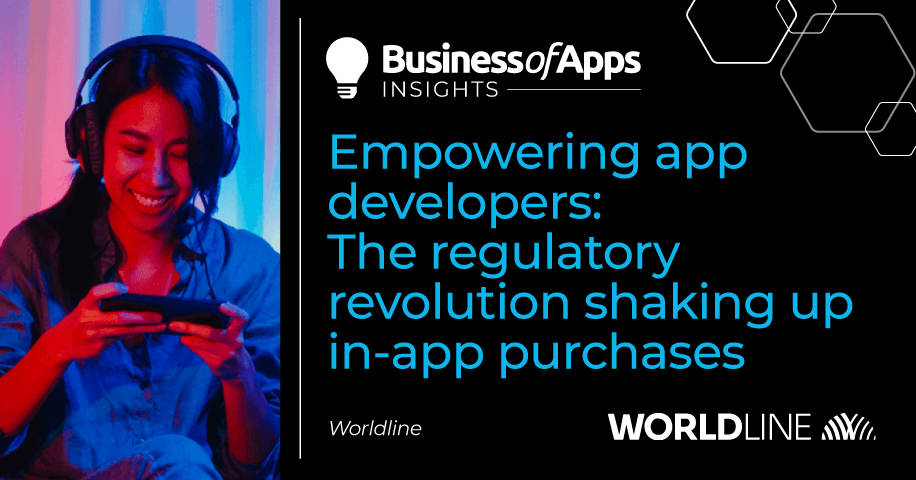Imagine a world where app developers have the option to offer different payment systems and provide users with more flexibility over how they want to pay. It may sound like a distant dream, but thanks to recent regulatory changes, this vision is quickly becoming a reality. For years, the decisions over crucial digital goods like in-game currencies, app upgrades, and subscriptions rested in the hands of app store owners. As a result, users would be limited to making in-app purchases through the designated payment methods mandated by these app stores.
However, a shift in regulations has emerged disrupting this longstanding status quo. Newer regulations are putting the control into the hands of the app developers. This implementation will empower developers to offer a diverse range of payment systems “of their choosing,” thereby giving users the freedom to select an alternative payment method along with the billing system. This strategic move amplifies app developers’ and publishers’ authority over the checkout experience, facilitating an augmented conversion rate.
Furthermore, by embracing third-party payment providers, the potential for enhanced profitability is immense as developers can either retain a higher share of their app sales revenue or pass on cost savings to their cherished customers. This article will focus on the transformative regulations reshaping the landscape of in-app purchases and guidance for app developers who are unsure of how to navigate these changes.
Understanding the changes
The digital marketplace is in the midst of a transformation as new regulations sweep the globe. Notably, South Korea and India have taken charge, pushing app store giants to provide alternative payment options for in-app purchases. Developers catering to these markets now have the liberty to implement third-party billing systems, gaining direct control over users’ in-app payments. This regulatory drive empowers developers, offering them more flexibility and choice when it comes to conducting transactions within their apps.
By embracing these alternative payment options, developers can elevate the overall user experience and streamline the payment process. With the ascent of these regulatory changes, the digital marketplace ecosystem assumes a new stance, prioritising equity and user empowerment, igniting innovation and fostering growth within the app industry.
One of the most noteworthy regulatory changes took effect at the close of 2022 when the EU implemented the Digital Markets Act. This ground-breaking act opens the door for third-party payment providers to step into the digital app realm. Starting in 2024, non-compliant companies could face hefty fines, amounting to up to 10 per cent of their global revenue.
In response, app store owners are beginning to adopt a more lenient approach towards digital in-app purchases. Both Google and Apple have announced a series of rule changes for their in-app billing systems, specifically in select countries across Asia and Europe. Developers now have varying degrees of flexibility in offering customers alternative payment options for in-app digital goods and services. Moreover, they have commenced reducing developers’ fees by approximately 3-4%.
On a global scale, Google is piloting alternative billing programs to explore extending this choice to a wider user base. These regulatory shifts signal the perfect opportunity for app developers and publishers to take action and regain control over their in-app payments.
Why offer third-party in-app billing?
As these changes are unfolding quite quickly, developers – particularly those on a smaller scale – may feel a sense of unease when venturing into the realm of in-app billing. However, by embracing third-party billing, an array of remarkable advantages opens up for mobile app developers and publishers of all sizes. Let’s take a closer look at some key benefits that arise from integrating these third-party billing systems:
- Expanding profit margins: By overcoming the weighty fees imposed by app stores, developers can behold a larger portion of their app sales revenue.
- Crafting a customised checkout experience: With third-party billing, developers garner greater control over the checkout process’s design. This empowers them to tailor the experience to seamlessly align with their brand identity.
- Bestowing users with payment options: Third-party billing empowers users by providing them with a wider array of payment methods. Users can choose between third-party billing and in-app billing via app stores which amplifies conversion rates and creates enhanced customer satisfaction.
- Subscription management mastery: Developers have the capability to give users direct control over their subscriptions, either within the app or through a web browser. This approach grants a deeper understanding of the customer’s decision-making process, allows for timely upselling opportunities, and aids in salvaging revenues before customers decide to discontinue their subscription.
- Elevated customer engagement: When developers handle payments directly, they gain the power to swiftly address customer requests, including refunds ensuring heightened levels of satisfaction and loyalty.
It’s worth noting that the end-user experience may vary based on jurisdiction-specific app store requirements and how developers implement third-party billing. Nevertheless, overall, developers can proffer a flexible and secure checkout experience akin to non-digital in-app billing systems. By embracing third-party billing, developers can unlock new possibilities, boost their revenue, and forge mutual success.
How can app developers test the waters?
As numerous regions are already liberalising their digital goods and services marketplaces, mobile app developers can now consider venturing into third-party in-app billing. In markets where such payment systems are already operational (such as South Korea and India), developers could contemplate trialling alternative payment methods with their customers immediately. Even if these aren’t their primary markets, it will equip developers with invaluable insights ahead of any rollout in other markets.
Developers marketing mobile apps in the EU can begin to assess the feasibility of switching to alternative payments while they await detailed guidelines from app stores. Here, an autonomous payment service provider like Worldline can keep developers informed of crucial updates and assist in their preparation. Choosing the right company to guide you can help evaluate opportunities for specific titles and markets, conduct testing, and provide the necessary insights for accurate decision-making.
In conclusion, the recent regulatory revolution around in-app purchases is reshaping the digital marketplace, shifting power into the hands of app developers and ultimately enhancing the user experience. These changes are creating a more equitable and innovative app industry, where developers can implement third-party in-app billing systems, offering users greater flexibility and choice.
Moreover, these changes promise benefits like expanded profit margins and increased customer satisfaction. As the world moves towards this new paradigm, it’s essential for developers to proactively adapt, learn and capitalise on these changes. With careful planning, testing, and implementation, developers can seize this opportunity to drive growth, boost revenue, and create more engaging and user-centric.
To find out more about our offerings for alternative in-app purchases, please visit our website here.












